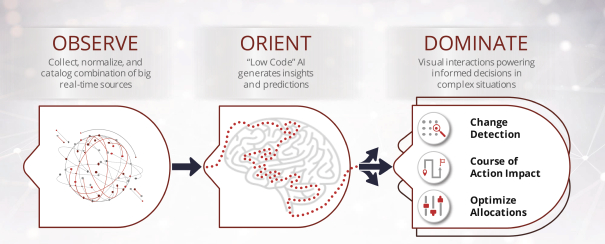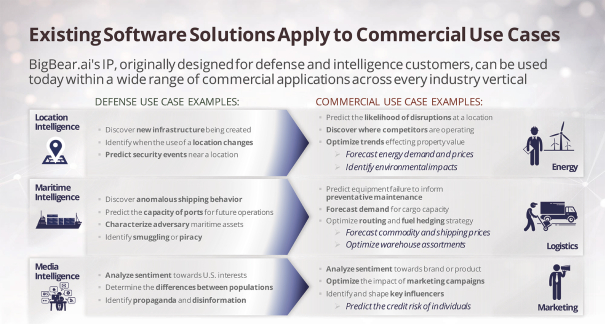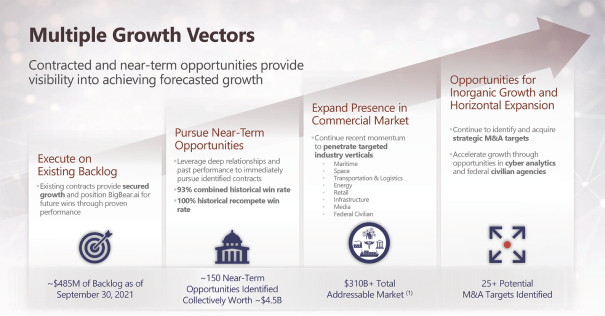. Dr. Katz serves as a member of our Board. Dr. Katz is the Founding Managing Partner of GigCapital Global, a serial issuer of
Equity (PPE) entities, also known as Special Purpose Acquisition Companies (SPACs), which since middle of 2017 has issued and completed initial public offerings of six PPE entities, and closed Business Combinations of four of the PPE entities with technology, media and telecommunications (TMT) companies, including GigCapital4 which he
co-founded
together with Dr. Raluca Dinu and served as its Executive Chairman of the board of directors prior to the Closing of the Business Combination with BigBear in December of 2021. Dr. Katz spent approximately 33 years in international executive positions within the TMT industry working for privately held
start-ups,
middle-cap
companies and large enterprises. In these roles, Dr. Katz has been instrumental in launching and accelerating entities, building teams, large-scale fund raising, developing key alliances and technology partnerships, M&A activities, business development, financial management, global operations and sales and marketing. Dr. Katz has held leadership positions, and Executive Chairman of the board of directors of all the GigCapital Global issued PPE companies, including GigCapital, Inc. (“
”), which completed its initial public offering in December 2017 and later a business combination with Kaleyra in November of 2019 (NYSE KLR); GigCapital2, Inc., which completed its initial public offering in June 2019 and later a business combination with UpHealth Holdings, Inc. and Cloudbreak Health, LLC in June 2021 (NYSE UPH); GigCapital3, Inc. (“
”), which completed its initial public offering in May 2020 and later a business combination with Lightning Systems in May 2021 (NYSE ZEV), Inc.; GigInternational1, Inc. (“
”), which completed its initial public offering in May 2021 and GigCapital5, Inc. (“
”), which completed its initial public offering in September 2021. In parallel to GigCapital Global operations, Dr. Katz is also the
co-founder
of Cognizer and was the Executive Chairman of Cognizer’s board of directors from its inception in December 2018 until August 2020. Prior to GIG1, GIG2 and GIG3, GIG4, GIG5 and GigIn1, Dr. Katz dedicated 10 years to incept and bootstrap, develop and manage GigPeak (NYSE American: formerly GIG), originally known as GigOptix, Inc. Dr. Katz served as Chairman of the Board, Chief Executive Officer and President of GigOptix / GigPeak. From its inception in 2007 until its sale in April 2017 to IDT for $250 million in cash, during which period the company completed 10 M&A deals. From 2003 to 2005, Dr. Katz was the chief executive officer, president, and member of the board of directors of Intransa, Inc., and from 2000 to 2003, Dr. Katz was the chief executive officer and a member of the board of directors of Equator Technologies. Dr. Katz has held several leadership positions over the span of his career within the technology industry since serving as member of Technical Staff at AT&T Bell Laboratories at Murray Hill, New Jersey, in the 1980s, and has made numerous angel investments in high-tech companies around the world. Dr. Katz is a graduate of the 1976 class of the Israeli Naval Academy, graduate of the 1979 USA Navy ASW class, and holds a B.Sc. and Ph.D. in Semiconductors Materials from the Technion (Israel Institute of Technology). Dr. Katz is a serial entrepreneur, holds many U.S. and international patents, has published many technical papers and is the editor of a number of technical books. We believe that Dr. Katz is qualified to serve on our Board based on his business experience as a founder, inventor, chief executive officer and director of a publicly listed company and his investing experience.
. Mr. Konert serves as a member of our Board. Mr. Konert has served with AE Industrial Partners, LLC, as a Partner since October 2019 and as a Principal starting in August 2014. Mr. Konert sits on the boards of multiple AE Industrial portfolio companies, including AMPAC, Atlas Aerospace, Belcan, Columbia Helicopters, Pangiam Holdings, ThayerMahan, Redwire, and Edge Autonomy. Previously, Mr. Konert was a Senior Associate at Sun Capital Partners from July 2011 to July 2014. Mr. Konert earned his undergraduate degree from Davidson College.



